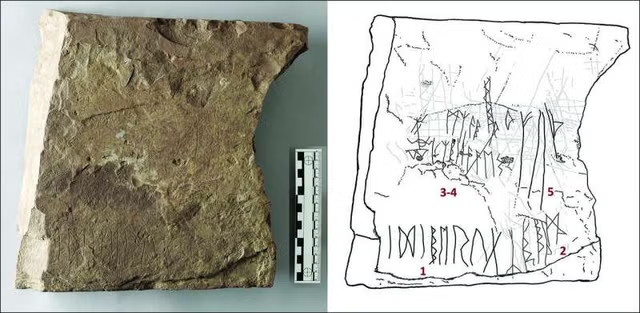Archaeologists have uncovered rare stone fragments inscribed with early Germanic letters, providing new insights into the evolution of the Norse language before the Viking Age. This groundbreaking discovery, made at a burial site in Svingerud, Norway, reveals how runes were used centuries before the Latin alphabet became dominant in Nordic regions.
A Puzzle of Ancient Inscriptions
Researchers from the University of Oslo pieced together these ancient fragments, which fit together "like a jigsaw puzzle." Their study, published in Antiquity, suggests that the inscriptions were deliberately separated and later incorporated into different graves. This finding sheds light on the ritual significance of early runic writing, which was in use until approximately 700 AD.
The origins and development of runic inscriptions have long remained a mystery. According to Kristel Zilmer, a professor of runology at the University of Oslo, tracing the evolution of these early symbols and their transition to stone carvings has been particularly challenging.
The Oldest Known Rune Carvings
The excavations, conducted between 2021 and 2023, uncovered sandstone fragments that date back to between 50 BC and 275 AD. This makes them the earliest known examples of runes used in a funerary context. The markings on these stones include an unusual combination of runes and other symbols, raising questions about their purpose and meaning.
Once reconstructed, the fragments formed part of a much larger rune stone that had been intentionally broken and scattered across multiple graves. This suggests that rune stones served both ceremonial and practical functions.
Symbolism and Function of the Rune Stones
According to Dr. Zilmer, the original rune stone likely had a commemorative purpose, honoring the deceased. However, its later reuse in separate burials suggests a shift in meaning, possibly taking on symbolic or even pragmatic significance.
Archaeologists are still trying to determine whether the unidentified symbols on the stone represent an early writing system or were purely decorative. Another mystery is why the stone was deliberately fragmented and dispersed.
A Breakthrough for Archaeology
This discovery is particularly significant because well-preserved, datable runic fragments are extremely rare. Co-author Steinar Solheim emphasized that the find highlights the need for archaeologists to carefully examine stone fragments found in burial sites, as they may contain overlooked inscriptions.
By studying these ancient carvings, researchers are not only uncovering the origins of written language in Scandinavia but also gaining a deeper understanding of how early Germanic societies commemorated their dead.






